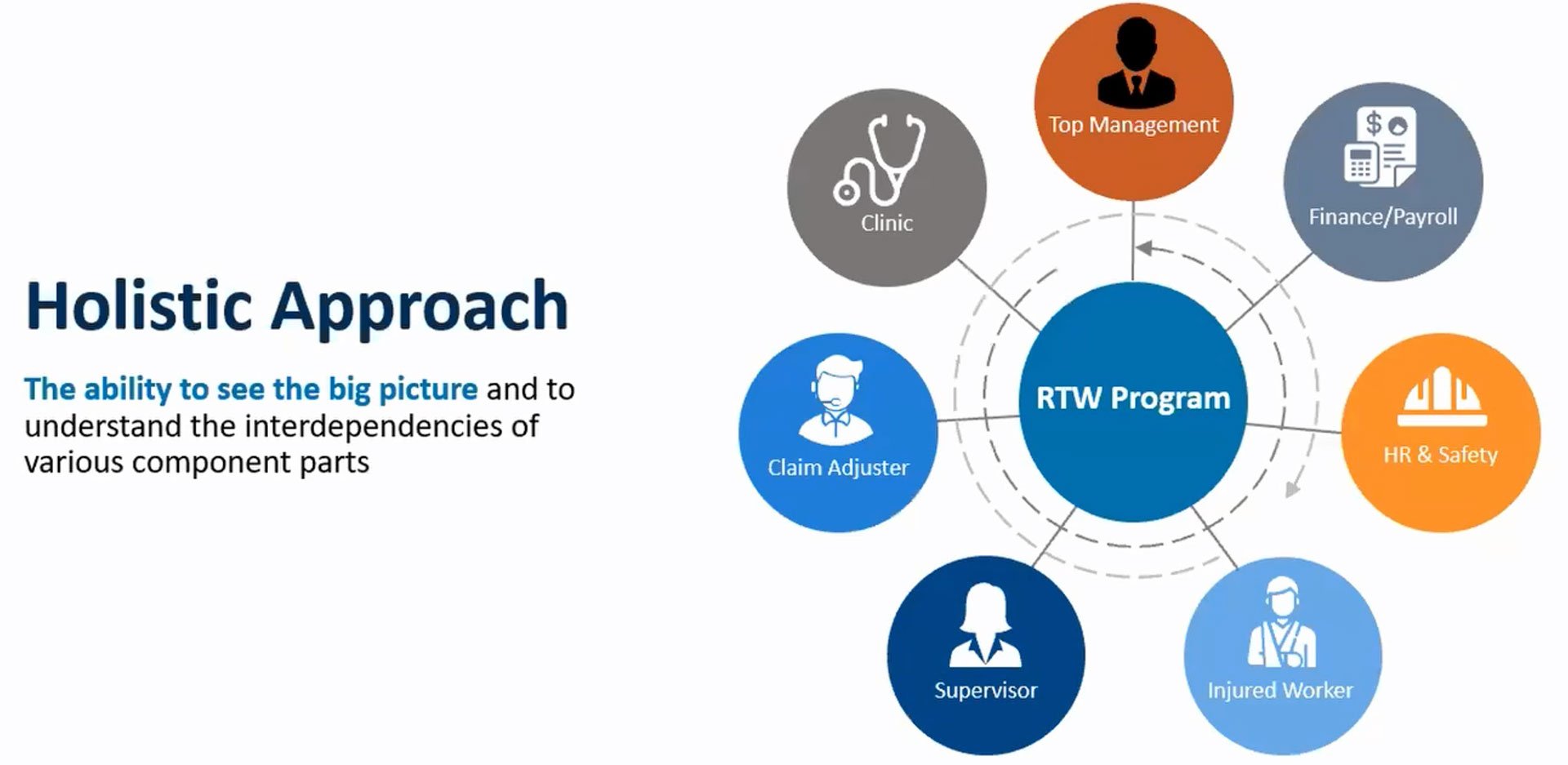When a workplace injury occurs, does your company have a program in place to safely return employees to work? If not, it’s a good idea to implement one as soon as possible with top management leading the way.
Experts recommend taking a holistic approach to returning employees to work, which means everything from considering what caused the injury in the first place, taking steps to enhance safety and mitigate future risk, managing the workers’ comp claim process and preparing both the injured worker and other employees for the return to the job. Several core departments such as Claims, Payroll, Finance, Human Resources, Safety, etc. all factor into a coordinated approach.

The benefits of a holistic approach
This approach offers many benefits—both to the employer and the employee. First, it ensures you are providing the best care possible for the injured worker. This helps reduce recovery time and the risk of malingering and litigation, but it also boosts morale because it fosters a culture in which the employer is concerned about its employees and their safety.
In addition, this approach helps the employer control costs that could become significant if the employee makes aggressive claims related to the injury. It also helps reduce insurance costs., which in turn makes the company more competitive in the market.
From the employees’ perspective, this holistic approach to returning to work provides them with peace of mind about their employment, financial security, connections with their coworkers, the stability of a work routine and skill retention. When there is a culture of safety in the workplace, peers can support each other in following best safety practices and reducing the risk of future accidents, too.
Navigating the workers’ comp claim process
There are steps you can take to streamline the workers’ comp process and make injured employees’ return to work more successful for all involved. They include:
- Promptly reporting injuries using different methods, such as phone calls, online reporting and email
- Maintaining three points of contact and clear communication around lost time
- Assigning a telephonic nurse case manager to facilitate and direct medical treatment for swifter, more successful recovery
- Identifying opportunities for employees who are returning to work after an injury, including modified work or regular duties
- Discharging the employee from care and closing the file
Developing a written return-to-work policy
It’s essential that your company has a formal return-to-work policy. This ensures your employees will receive consistent and fair treatment in the event of an injury and underscores your company’s commitment to helping get employees back on the job.
Ideally, a written plan would outline criteria for returning employees to structured and meaningful work, ensure collaboration with an employee’s medical provider to safely assign work duties, clearly list duties and expectations for transitional work, and lay out procedures for supervising work activities to ensure safety and prevent re-injury.
The owner of the return-to-work policy should ensure leadership at all levels of the organization are in alignment with it. It’s also important to communicate the policy with employees—including new hires—so they understand the process in the event they become injured on the job.
Overcoming objections
There may be some reluctance among employees and leaders to returning injured employees to work for a variety of reasons. These include:
- Fear of the employee getting re-injured
- Manager resistance to increased supervision of the injured employee
- Lower morale resulting from a potential safety violations
- Negative impact on a manager’s budget
- Possibility that the injured employee may resist modified work duties
However, it’s important to tackle these potential obstacles head-on for the benefit of all parties.
Top management should communicate the importance of having a return-to-work policy so employees understand it has support from the top down. Managers should also be trained on the importance of maintaining a high level of morale within their teams and the company at large. With their buy-in, managers also play an important role in helping identify modified work roles, as well as finding ways to control costs.
When you make the effort to create a holistic return-to-work program for your business—and champion it with your leaders and employees—it benefits your employee and your bottom line.
For more information on this topic, please refer to CopperPoint’s Thought Leadership Series and recent webinar “Returning Injured Employees to Work: A Holistic Approach” hosted by our panel of experts: Chris Baughman, Lara Cossentine and Shelli Tickle.
CopperPoint Insurance Companies is a western-based super regional commercial insurance company and a leading provider of workers’ compensation and commercial insurance solutions. With an expanded line of insurance products and a growing 10 state footprint in the western United States, CopperPoint is in a strong position to meet the evolving needs of our brokers, agents and customers.
To learn more about our insurance products and find resources to better manage your risks, explore our website or contact your independent insurance agent.




